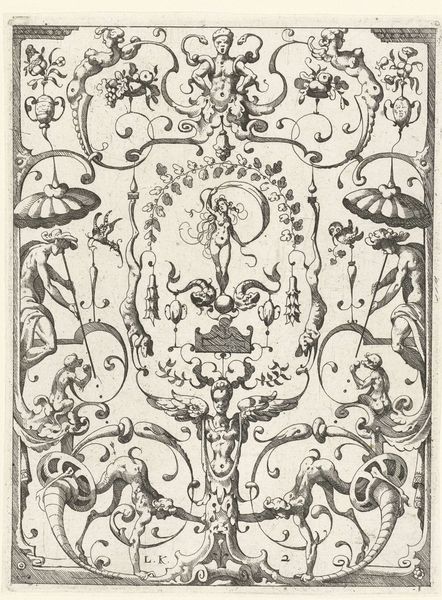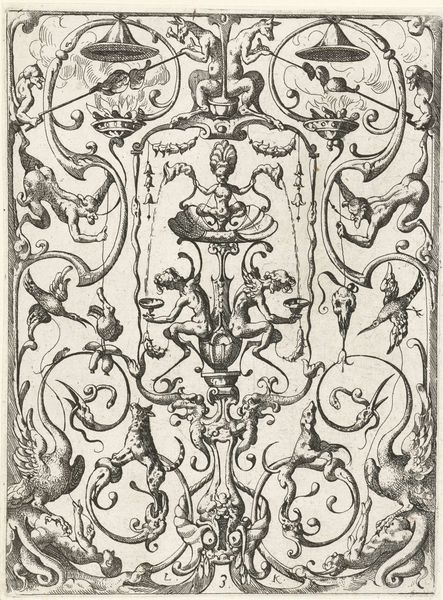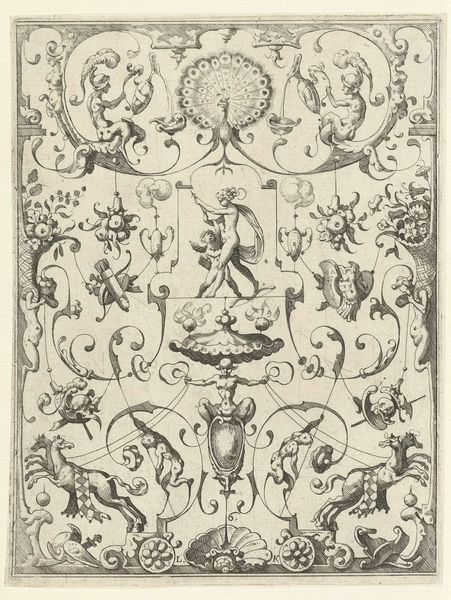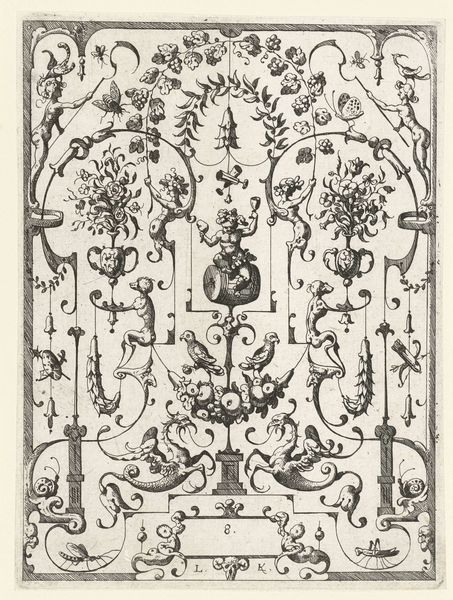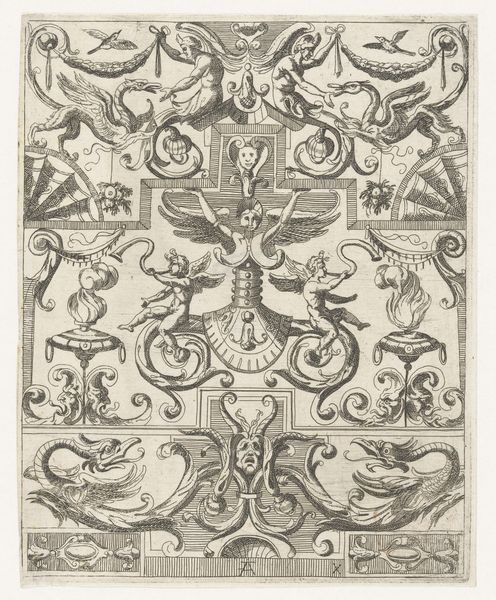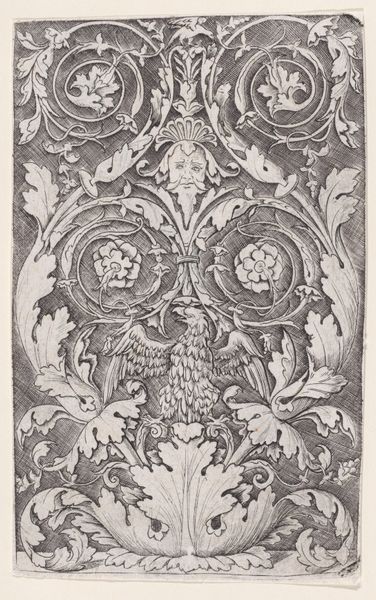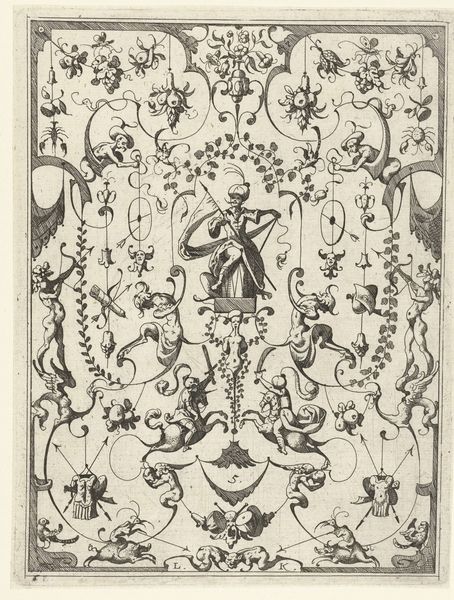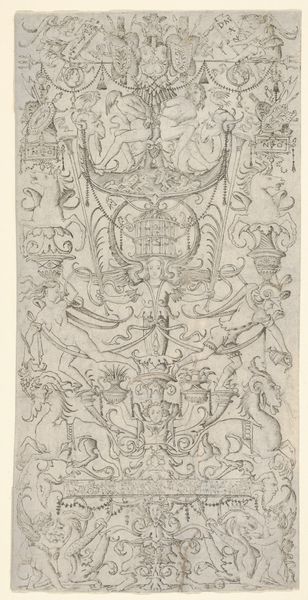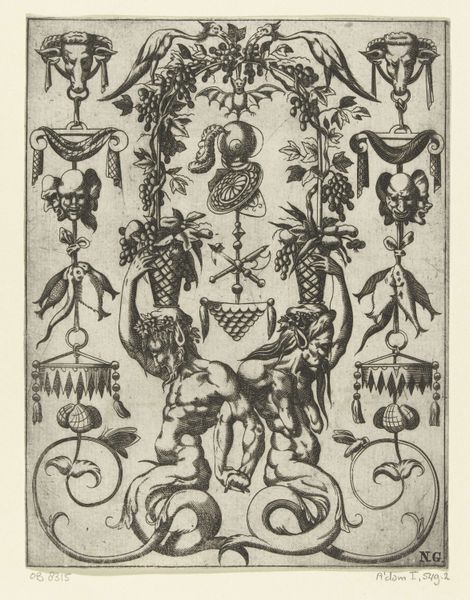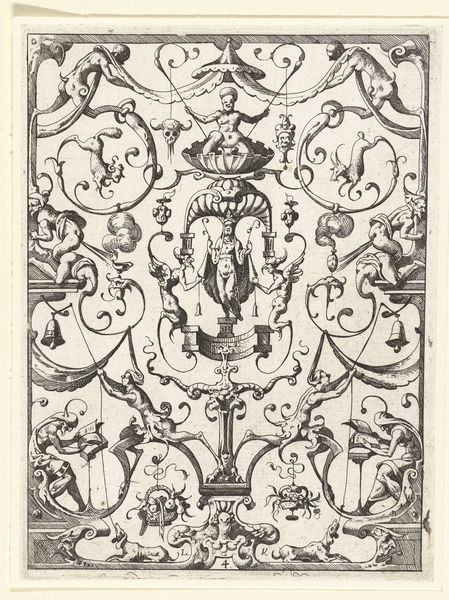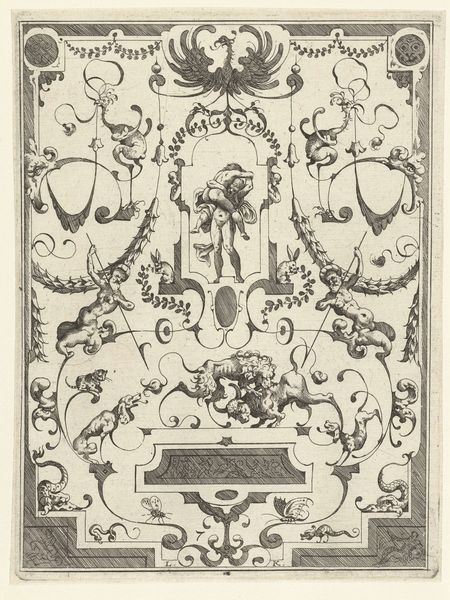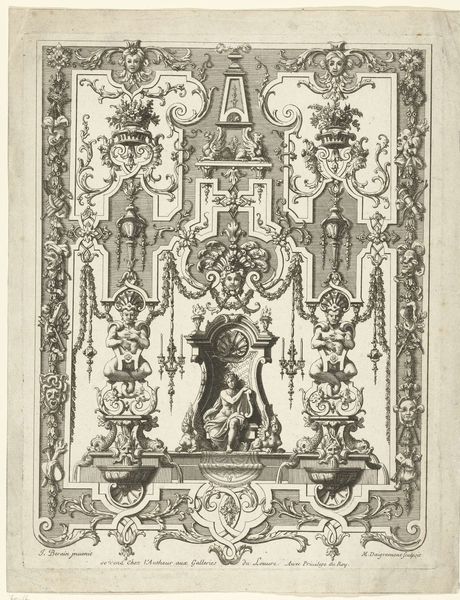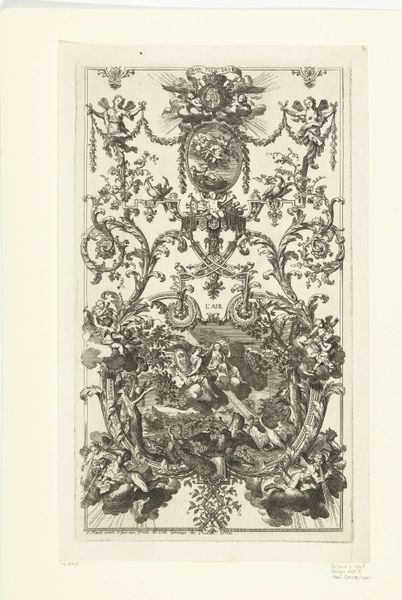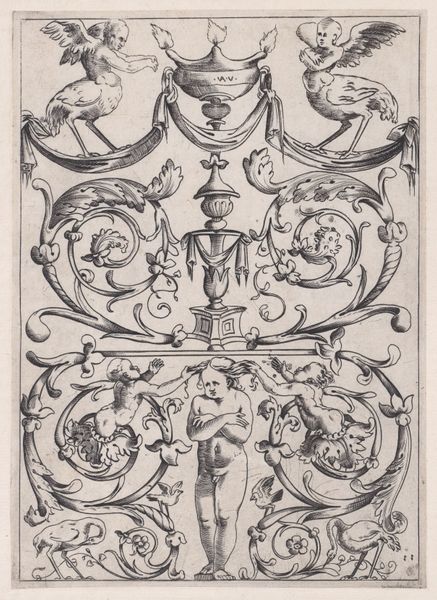
drawing, ink, engraving
#
drawing
#
pen drawing
#
mannerism
#
figuration
#
ink line art
#
11_renaissance
#
ink
#
line
#
pen work
#
engraving
Dimensions: height 190 mm, width 144 mm
Copyright: Rijks Museum: Open Domain
Editor: So, this is *Vlakdecoratie met grotesken*, or Panel Decoration with Grotesques, an engraving in ink by Lucas Kilian, dating back to 1607. It’s held at the Rijksmuseum. It's quite dense and detailed; what strikes me is how playfully chaotic it feels, a real visual feast of mythical figures and musical instruments all intertwined. How do you interpret this work? Curator: The “grotesque” style itself carries a lot of symbolic weight. It revives ancient Roman decorative motifs discovered during the Renaissance, becoming a popular vehicle for expressing fantasy, wit, and even the darker sides of the human psyche. Notice how these figures, seemingly playful, often have unsettling or exaggerated features. Editor: Unsettling, definitely. Like that central scene with the figure riding a donkey amidst the stars… it feels almost dreamlike, but also slightly mocking. Curator: Exactly! And consider how these motifs are employed. During this period, grotesque designs were often used to decorate private spaces or objects. What might that suggest about the kind of visual culture Kilian was participating in? Who might have wanted this print, and what associations might it evoke for them? Editor: I hadn’t considered the "who" behind the image. So, this print, potentially displayed in a home, would have invited the viewer to contemplate complex human traits, fears, and joys, through these fantastical characters and motifs? Curator: Precisely! It's about embedding cultural memory within everyday life, transforming domestic objects into potent vessels of visual communication and psychological reflection. These images become like visual shorthand, instantly triggering associations for a cultured viewer. Editor: That's fascinating. It changes my perception completely. Now I see it less as pure decoration and more as a deliberate encoding of meaning. Curator: Yes, it’s a dialogue between the past and present, where symbolic language becomes an emotional bridge through time. Editor: That’s a wonderful insight, making this piece far more intriguing! Thanks for sharing your expertise.
Comments
No comments
Be the first to comment and join the conversation on the ultimate creative platform.
